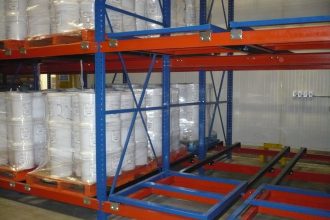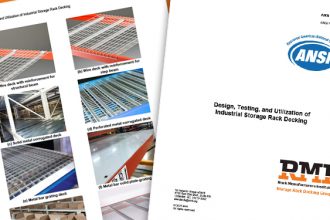How Seismic Redundancy Makes Racks Safer

To better mitigate seismic forces and reduce the risk of a rack structure failing during an earthquake, redundancy is included in the design of racks that are to be located in earthquake-prone zones. Doing so spreads out the effect of the seismic forces upon the rack. These factors are described in section 2.6.2.1 of the recently updated ANSI MH16.1-2012 (R2019): Specification for the Design, Testing and Utilization of Industrial Steel Storage Racks, published by RMI.
The rack system may be redundant in either or both principal directions (down-aisle and cross-aisle). Redundancy is achieved in a rack system when there is more than one way to withstand the seismic forces. When there is no redundancy the seismic forces must be increased by 30%.
The down-aisle direction of an industrial storage rack system is already comprised of semi-rigid beam-to-column connections, as well as base plates securely anchored to the floor. These components create significant redundancy in that direction.
To create redundancy in the cross-aisle direction, back-to-back rows of rack, properly tied together, work together to resist seismic forces. However, single rack rows must be tied overhead to the rack on the other side of the aisle and with the frame diagonals oriented in opposite directions to create sufficient redundancy.
For additional information on seismic design requirements for rack safety, updated ANSI MH16.1-2012 (R2019) standard is available here.


